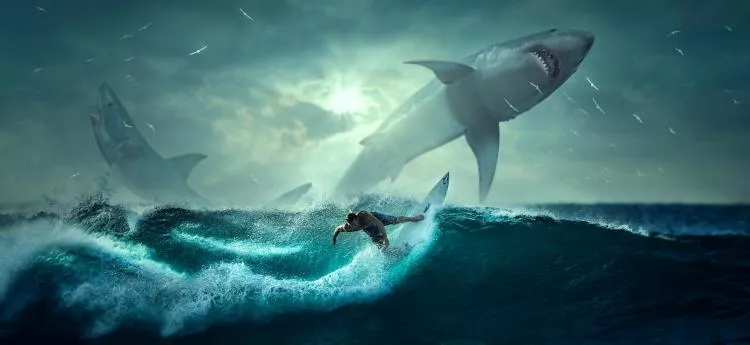"Mistaken identity theory" behind shark bites put to the test
A simulated 'shark vision' model confirms theories that when great white sharks bite humans, it may be a case of mistaken identity.
Why sharks sometimes bite humans remains unclear, but potential reasons include mistaken identity, whereby sharks are thought to mistake humans for their typical prey; curiosity; hunger; and defensive/offensive aggression.
The mistaken identity theory has received little scientific scrutiny and the visual similarity between humans and pinnipeds at the surface has been debated largely on the basis of human visual perception, rather than that of sharks.
However, recent progress in our understanding of the shark visual system has enabled a team of researchers from Australia's Macquarie University in Sydney, to investigate further the similarities between pinnipeds and humans from a shark's perspective.
What do sharks see?
The team is working on non-invasive vision-based devices to potentially protect surfers and swimmers from shark bites. In this study, the scientists measured and compared the visual cues emitted by different objects from the perspective of juvenile white sharks to test the mistaken identity hypothesis.
The researchers attached a GoPro to an underwater scooter, and set it to travel at a typical cruising speed for predatory sharks. Back in the lab, the team drew on extensive shark neuroscience data to apply filters to the video footage, and then create modelling programs to simulate the way that a juvenile white shark would process the movements and shapes of different objects.
They concluded that the poor spatial resolving power of the shark retina may result in bites on humans as a result of mistaken identity or ambiguous visual cues.
“Surfers are the highest-risk group for fatal shark bites, especially by juvenile white sharks,” says lead author Dr Laura Ryan, a post-doctoral researcher in animal sensory systems at Macquarie University’s Neurobiology Lab.
“We found that surfers, swimmers and pinnipeds (seals and sea-lions) on the surface of the ocean will look the same to a white shark looking up from below because these sharks can’t see fine details or colours."




























